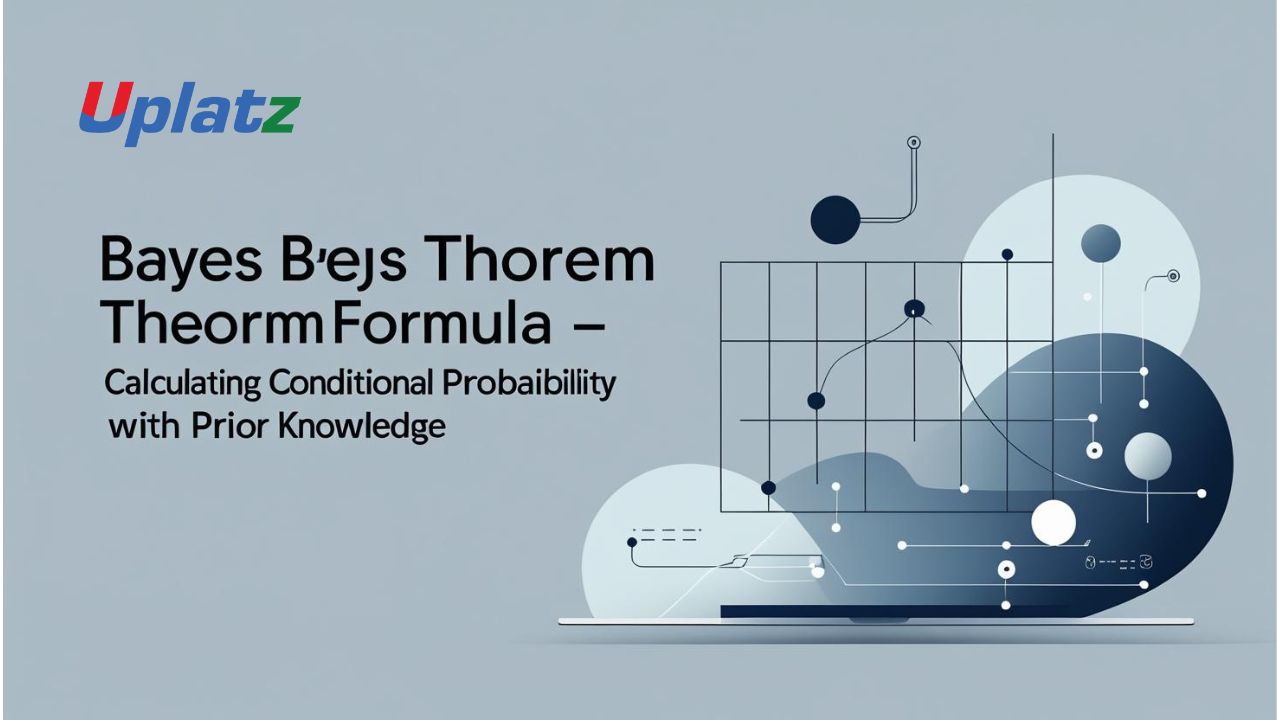 🔹 Short Description:
🔹 Short Description:
Bayes Theorem helps compute the probability of an event based on prior knowledge of related conditions. It’s fundamental in probability theory, decision-making, and machine learning.
🔹 Description (Plain Text):
Bayes Theorem is a foundational concept in probability theory that provides a mathematical framework for updating beliefs based on new evidence. Named after Reverend Thomas Bayes, this theorem allows us to reverse conditional probabilities and calculate the probability of a cause given an effect—a powerful idea behind reasoning under uncertainty.
It’s widely applied in fields like spam detection, medical diagnosis, natural language processing, and AI, where decisions must be made despite incomplete or evolving information.
📐 The Formula
P(A|B) = [P(B|A) × P(A)] / P(B)
Where:
- P(A|B) is the probability of event A given that B is true (posterior probability)
- P(B|A) is the probability of event B given A is true (likelihood)
- P(A) is the prior probability of A
- P(B) is the total probability of B (marginal probability)
🧪 Example
Imagine a disease affects 1% of a population. A test for the disease is 99% accurate (true positive rate), and false positives occur 5% of the time. If someone tests positive, what is the actual chance they have the disease?
Let:
- A = has disease → P(A) = 0.01
- B = tests positive
Now:
- P(B|A) = 0.99 (test detects disease if present)
- P(B|¬A) = 0.05 (false positive rate)
- P(¬A) = 0.99
Then,
P(B) = P(B|A) × P(A) + P(B|¬A) × P(¬A)
= (0.99 × 0.01) + (0.05 × 0.99)
= 0.0099 + 0.0495 = 0.0594
Now,
P(A|B) = (0.99 × 0.01) / 0.0594 ≈ 0.1667 or 16.67%
Even with a positive test, the actual chance of having the disease is just 16.67%—demonstrating how prior probabilities and test accuracy influence outcomes.
🧠 Why Bayes Theorem Matters
Bayes Theorem introduces a structured way to update probabilities and beliefs as new evidence becomes available. This makes it essential for probabilistic reasoning, diagnostics, risk analysis, and Bayesian machine learning.
It’s the basis for:
- Bayesian Networks
- Naive Bayes Classifiers
- Posterior inference in models
- Credible intervals in statistics
📊 Real-World Applications
- Medical Diagnosis
Doctors calculate the likelihood of diseases given symptoms and test results. - Email Spam Filters
Naive Bayes classifiers detect spam using word probabilities. - Autonomous Systems
Robotics and AI systems update models as new environmental data comes in. - Finance & Insurance
Used in fraud detection, risk modeling, and claim predictions. - Search Engines & Recommender Systems
Personalized predictions based on past user behavior. - Legal Decision Making
Applied to probabilistic assessment of evidence in forensic science.
🔍 Key Features
- Incorporates prior knowledge: Unlike frequentist methods, Bayes starts with a belief and updates it.
- Probabilistic reasoning: Useful in dynamic, real-world contexts where uncertainty is high.
- Simple yet powerful: Especially in naive Bayes models where independence is assumed.
⚠️ Limitations
- Requires accurate priors: Misleading priors can skew results.
- Computationally intensive: For complex models, exact Bayesian inference may be slow.
- Interpretation: Misunderstanding conditional probability can lead to wrong conclusions.
- Assumes conditional independence: Naive Bayes makes strong assumptions that don’t always hold in practice.
Despite these, Bayesian thinking has become a central pillar in modern AI and data science.
🧩 Summary
- Formula: P(A|B) = [P(B|A) × P(A)] / P(B)
- Purpose: Update beliefs with new evidence
- Use Cases: Email classification, diagnostics, recommendation systems
- Big Idea: Probabilities aren’t static—they evolve with knowledge
Bayes Theorem empowers machines and humans alike to make smarter decisions under uncertainty.
🔹 Meta Title:
Bayes Theorem Formula – Updating Probabilities with New Evidence
🔹 Meta Description:
Understand Bayes Theorem and how it helps in calculating conditional probability using prior knowledge. Learn its formula, examples, and role in AI and decision-making.
